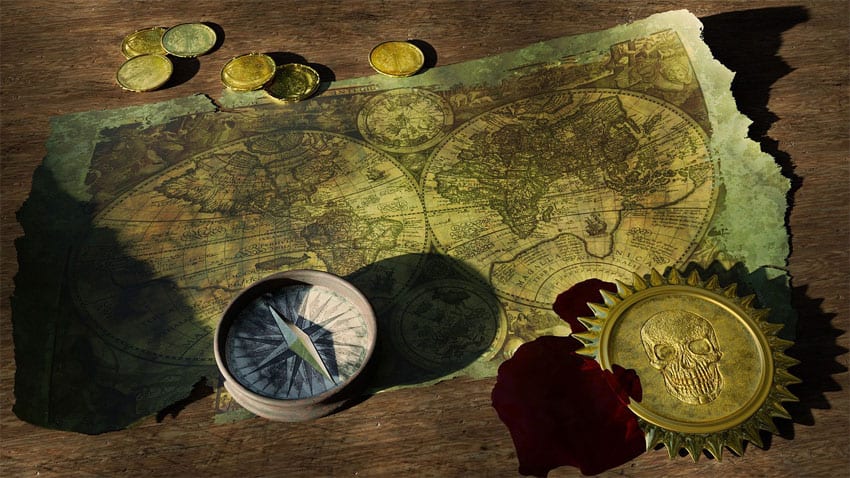Losing direction is way too familiar especially if you find yourself in the wilderness. To help us navigate our way back to the civilized world, many items have been developed. Today, we depend on modern GPS technology to give us directions.
The technology works great. You can know your way even if you are somewhere you have never been. All you need to do is to identify the important landmarks or the coordinates of where you wish to go, and your device will conveniently lead you there.
However, modern technology has two terrible flaws. First, they are powered by batteries which have limited life. Secondly, the device could break yet most of us do not have the technical know-how to repair it. These drawbacks limit the use of modern GPS technology in grid-down or other survival situations.
For these and additional reasons, maps and compass remain to be the best means of navigation through an unfamiliar landscape, or when the weather conditions impede your visibility.
How to Read a Map
Reading a map is the first step in knowing how to use any navigational device. Otherwise, the navigational equipment will be useless to you. However, the map should also have enough information to guide you through the process of reading it.
The critical information should include the scale. It gives you an idea of how an inch any measurement will translate in the actual landscape. Any map that’s worthwhile will consist of a few key pieces of information. Many different scales are used for different types of maps.
Roadmaps usually cover a massive area, but they lack many helpful details. This makes them less useful for backcountry travel or identifying the small features on a landscape.
Other types of maps are drawn to cover a much smaller area. This makes them highly helpful for navigating around a tiny space. The disadvantage of the latter kind of maps is that you will be forced to use need many maps if you must navigate over larger regions.
Another vital piece of information on any good quality map is the magnetic declination. This feature lets you adjust your compass to compensate for the local magnetic anomaly. This is crucial to navigation. It is something you must learn before you can use a map and a compass.
The last information you should expect to find in your map is a compass-rose. It will show you the essential directions regarding the landscape and the map. This information is also necessary for navigation.
Steps To Follow To Read a Map Correctly

Step 1: Choose the right map
There three different maps to choose from: topographic map, roadmap, and tourist map. The topographic map shows detailed information about the roads, terrains, distances, and points of interest. Knowing this map is vital for hikers.
A road map is useful if you are traveling. You can even employ the help of a passerby to read the map if you are uncertain. A tourist map, on the other hand, is useful if you find yourself lost in a large or unfamiliar city.
You also need to choose the right scale. Topographic maps usually use a scale of 1:50, 000. This means each centimeter translates to 50, 000 centimeters or 500 meters. A scale of 1:25, 000 gives more detailed information including features like large rocks and big trees.
Step 2: Understand the features of the map
There are unique features of maps you must understand for correct reading. The most important of these features are legend, title, grid references, scale, and the north arrow. Take your time and learn more about each of these features because they are invaluable in reading all types of maps.
Step 3: Put the map into practice
Start by pointing to the north. Merely place your compass flat on the map pointing upwards. Rotate your body until the needle of the compass points to the north.
You can then try to find your physical location on the map. This is the most crucial part of reading a map. Do it by identifying your surroundings and then relating them back to your map. Use things like rivers, mountains, walls, roads, saddles, spurs and more. Video tutorials are great in helping you hone this skill.
You should make use of contour lines to know your position on the map. You will need to know how to use scale here because each contour line on 1:50, 000 scale represents a rise of about 10 meters above sea level.
Step 4: Identify features associated with the landscape
The features listed earlier will give you an actual position on the map. Identify each of them on the map. You need to learn more on how spurs, summit, re-entrant, and saddle are represented in your map. Also, learn what they mean.
Step 5: Thumbing
Sometimes, it may be essential to retrace your last known location to find your position. Therefore, place a thumb on your current site. Even if you drop the map on your side, you can still reach for it to retrace your last known position.
Using a Compass
Using a compass can be difficult for those new to this navigation tool. Experience is the best teacher. When using the device ensure you hold its body flat on the map. The confirmation is when the air bubble inside the compass floats at the center of the chamber. That is when it’s level.
Ensure there is nothing magnetic around you or you will end up with an inaccurate reading. Differentiate between the magnetic North and True North. You also need to know how to adjust declination. This is because you will use the number of declinations to rotate the compass slowly until you are at the right amount of degrees away from the magnetic North to point to the True North.
If you can take a bearing on two or more recognizable landscapes or landmarks, you can line up your compass on features on your map. You can then draw a pair of lines connecting the points. Their intersection point should be your current position.
Conclusion
We have only presented you with a few basic principles on how to navigate with compass and map. You may have to find a more in-depth tutorial to help you hone the skills better. The information is readily available on the internet. However, you can benefit more by observing an expert to teach you one-on-one. These skills can save your life and that of your loved ones in a survival situation.
